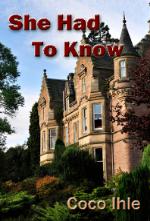I’ve mentioned before that I’m reading the entire oeuvre of a bestselling author, trying to figure out the reason for her popularity, and it just dawned on me why I am having such a hard time slogging through her words. It’s not simply that I’m not a fan of romance novels, it’s that she does not use beats. Beats, as you know, are interesting bits of action used as dialog tags:
“No!” Mary rushed to grab the paring knife from her two-year-old son.
Beats make the book; in many cases, they are the book. I first noticed this when I read an Iris Johansen thriller. I got bored with her series character and, for a change of pace, started reading only her beats. To my surprise, the entire story was there. The character’s fear, lessening of fear, relief, escalating fear, despair, desire, lust, all reaching to a crescendo of utter terror, and then finally peace and acceptance.
From that, I’ve learned to cultivate beats. When I’m looking at a movie that doesn’t capture my full attention, I watch the actors and try to put what I see into words. The other day I saw a character shoot a finger at a friend and smile as if he were agreeing with him, then the smile faded and he shook his head no. Not only did it have an element of humor (doing the opposite of what’s expected) it was a brilliant beat, perfectly timed.
Obviously, not using beats has not hurt the bestselling romance writer any, but for the rest of us, the beat goes on.
Pat Bertram is the author of More Deaths Than One, and A Spark of Heavenly Fire now available from Second Wind Publishing, LLC.










I also have trouble reading books that don’t have action in them. They say that the best writing doesn’t tell the story, it brings the reader into the world with smells, tastes, feelings, etc. But to stay interesting there has to be action as well.
Cheers,
Trevas
Keep the inspiration and work flowing. If nothing else, enjoy the moment.
Confusing when the much published miss basic writing elements, imho.
Oh, man. I just went through a couple looonggg books I wrote a few years ago, and boy did my dialog tags suck. I had SOME good beats but not nearly enough.
The books are still really dialog-heavy but read better now, I think.
Great topic and something that isn’t discussed often enough.
Dialog tags should be invisible — the eye more or less skips over ‘said.’ They should also only be used to make sure the reader knows who’s speaking. So, beats are definitely another way to keep things straight. However, too much of either can bog things down. The dialog needs to flow, and stopping it too often can mess with the pacing of the story. So much depends on what’s happening in the scene. In a mystery, during the questioning of a witness at a high-tension point, you want to keep things moving. Also, a lot will depend on how many people are in the scene. With more than 2, beats and tags become more necessary.
Interesting article! I never thought about it, but now I will have to look for beats in what I read! Out of curiousity, whose books are you reading to determine why she’s popular?
Yeah, beats are useful to keep people aware of the setting, especially in a long stretch of dialogue.
Funny, I’ve never heard them called beats before. But I know what you mean. Like Pat S., I’d love to know what author you’re studying. I just finished a romance novel that was not good. And now that I think about it, I’m suspecting a lack of beats might’ve been part of the problem. That, and the author was trying too hard to be funny. Humor is a funny thing, sometimes literally, sometimes not.
I agree, Pat. Beats make the book. If the writer doesn’t indicate what the character is going through, how are we to care?
You are so right, Pat. It’s the same thing with dialogue (my favorite part of writing). Sometimes, the more interesting part of the dialogue is what isn’t said, as opposed to what is. A great exercise for any writer (one which I might repeat soon) is to take a course in screenwriting. One of the things you learn to do is to tell the story with up-front dialogue, then tell it again with subtext. Sometimes, the more interesting part of the story is what isn’t immediately visible, but what’s lurking in the shadows.
As a musician, I ‘m sensitive to a writer’s cadence, tempo and pace. I try to make things scan smoothly. Is that what we’re talking about?
Ken, that kind of beat, too. Writers must pay attention to cadence, tempo, and pace to make the story flow smoothly.
Thank you, everyone, for stopping by and leaving a comment. You made me feel like a real celebrity today.
Hi Pat,
Back from non-Internet land. Since I discovered beats about a year ago, I notice that writers who “feel” contemporary use them and they are conspicuously lacking in many older books.
They are a good way to mix up the pace between dialog and the character interaction. Beats — good to use, but not over-use.
James, glad to see you back in internet land. I hadn’t realized beats gave books a contemporary feel, but you’re right. They seem to take the place of a lot of old-fashioned rumination — the whole show, don’t tell bit.